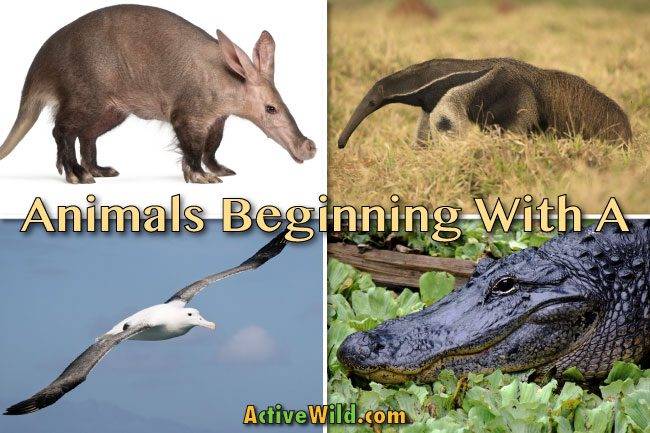
Animals that start with A include mammals such as the aardvark, African bush elephant, Arctic fox and aye-aye; reptiles such as alligators, anacondas and the alligator snapping turtle; amphibians such as the African clawed toad and axolotl; and birds such as albatrosses and auks.
On this page you’ll meet these and many other interesting animals beginning with A, together with pictures and facts on each species.
Below each animal you’ll find links that you can follow for further information, pictures and videos.
Included in this list are individual species (e.g., the African wild dog) and well-known groups of species (e.g., angel sharks) whose names begin with A.
The scientific name and conservation status are provided for each of the individual species.
Index
Scroll down to see pictures and facts on all of the animals, or use the index below to go directly to a particular animal.
List Of Animals Beginning With A
- Aardvark
- Aardwolf
- Adélie Penguin
- African Bush Elephant
- African Clawed Frog
- African Grey Parrot
- African Wild Dog
- Airedale Terrier
- Alaskan Malamute
- Albatross
- Alligator Snapping Turtle
- Alpaca
- American Alligator
- Amur Leopard
- Anaconda
- Anchovy
- Angel Shark
- Anglerfish
- Anteater
- Antelope
- Archerfish
- Arctic Fox
- Arctic Hare
- Armadillo
- Asian Elephant
- Auk
- Australian Shepherd
- Avocet
- Axolotl
- Aye-Aye
You can find animals beginning with other letters by clicking on the squares below…
Aardvark
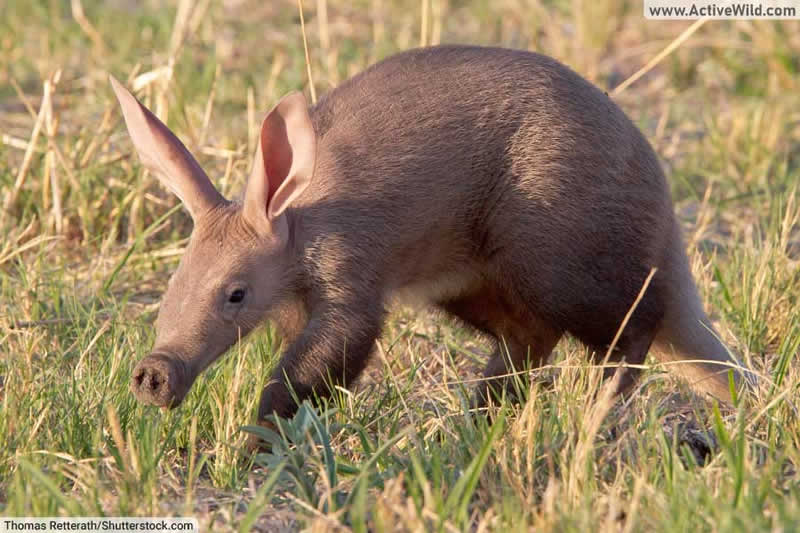
Scientific name: Orycteropus afer
Type of animal: Mammal
Family: Orycteropodidae
Where found: Africa
Conservation status: Least Concern
Guaranteed to come first in any list of animals that start with A is the aardvark. The aardvark is a nocturnal, burrowing mammal found in savannas, grasslands and woodlands in sub-Saharan Africa (the area south of the Sahara desert).
The aardvark’s diet consists almost entirely of ants and termites, but the species is also known eat the aardvark cucumber, a fruit whose seeds it helps to spread. The aardvark has powerful legs and strong claws, and is an expert at digging.
The name “aardvark” means “earth pig” in Afrikaans, a language widely-spoken in southern Africa. Despite the name, the aardvark is not related to pigs. In fact, the species’ closest relatives belong to a group of animals, Afrotheria, that evolved in Africa. This group contains animals such as elephants, manatees and tenrecs.
Discover More with Active Wild
You can find out more about the aardvark on this page: Aardvark Facts
Discover more African animals on this page: African Animals List with Pictures & Facts
Aardwolf
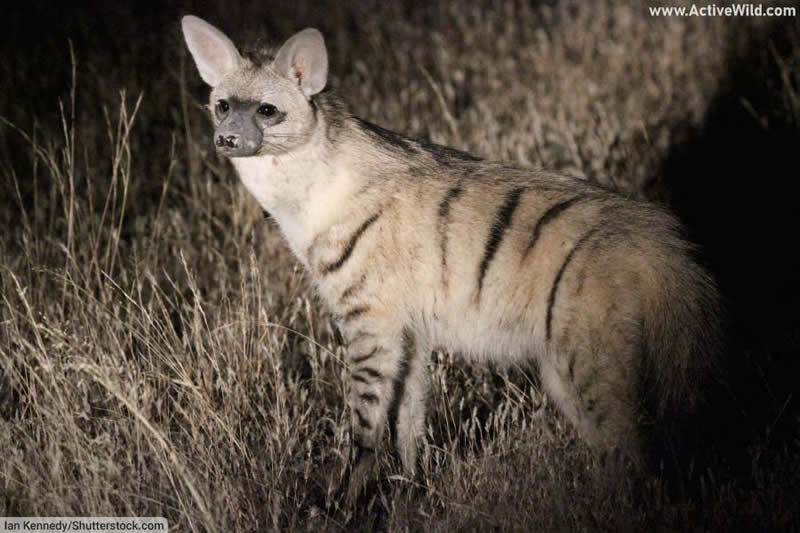
Scientific name: Proteles cristata
Type of animal: Mammal
Family: Hyaenidae
Where found: Africa
Conservation status: Least Concern
The aardwolf is, on average, the smallest of the four members of the hyena family, Hyaenidae.
Unlike the other hyenas (the spotted, striped and brown hyena), the aardwolf does not target large animals, either by hunting or scavenging. Instead, it is a specialized insectivore (insect-eater), that targets termites and other small insects.
Using its long, sticky tongue, an aardwolf can eat up to a quarter of a million termites in a single night.
The aardwolf lives in grasslands and savannas in southern and eastern Africa.
Discover More with Active Wild
You can find out more about the aardwolf on this page: Aardwolf Facts
Discover more African animals on this page: African Animals List with Pictures & Facts
Adélie Penguin
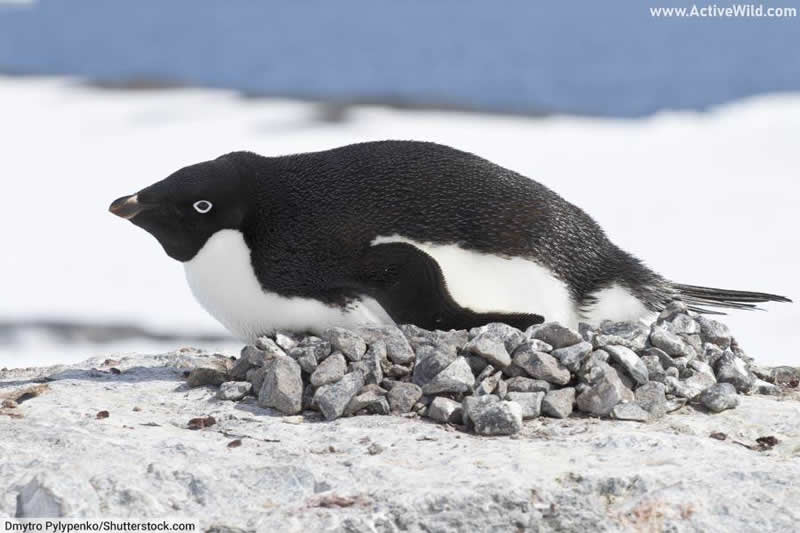
Scientific name: Pygoscelis adeliae
Type of animal: Bird
Family: Spheniscidae
Where found: Antarctica
Conservation status: Least Concern
Identified by a characteristic white eye ring, the Adélie penguin is a mid-sized penguin found in Antarctica. The species is found around the continent’s entire coastline, making it the most widely-distributed species of penguin.
The Adélie Penguin travels up to 8,000 miles across the ice every year while migrating between its feeding and breeding grounds.
The species is named after Adélie Land, a region of Antarctica which itself was named after Adèle, wife of French explorer Jules Dumont d’Urville, who also discovered the penguin.
Discover More with Active Wild
You can find out more about the Adélie Penguin on this page: Adélie Penguin Facts
You can see a list of every penguin species on this page: Penguin Species List with Pictures & Facts
You can find out more about animals that live on Antarctica on this page: Antarctic Animals List with Pictures & Facts
African Bush Elephant
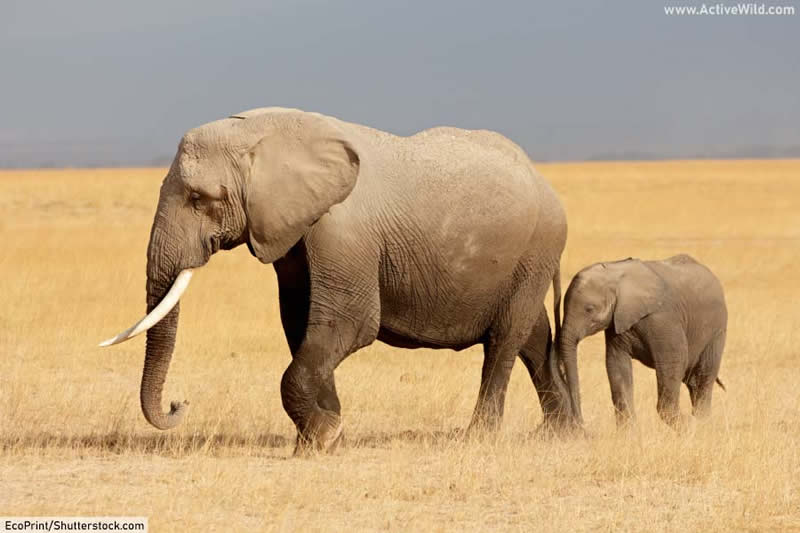
Scientific name: Loxodonta africana
Type of animal: Mammal
Family: Elephantidae
Where found: Africa
Conservation status: Endangered
Reaching a height of almost 4 m (13.12 ft.) at the shoulders, and weighing over 10 metric tons (22,046 lb.), the African bush elephant is the world’s largest land animal.
The African bush elephant is one of two elephant species found in Africa, the other being the smaller African forest elephant.
(A third elephant species, the Asian elephant, is found in Asia.)
Classified as an endangered species by the IUCN in 2021, the African bush elephant is threatened both by illegal poaching and habitat loss.
Discover More with Active Wild
You can find out more about the African bush elephant on this page: African Bush Elephant Facts
Find out more about endangered elephants on this page: Endangered Elephants
Discover more African animals on this page: African Animals List with Pictures & Facts
African Clawed Frog
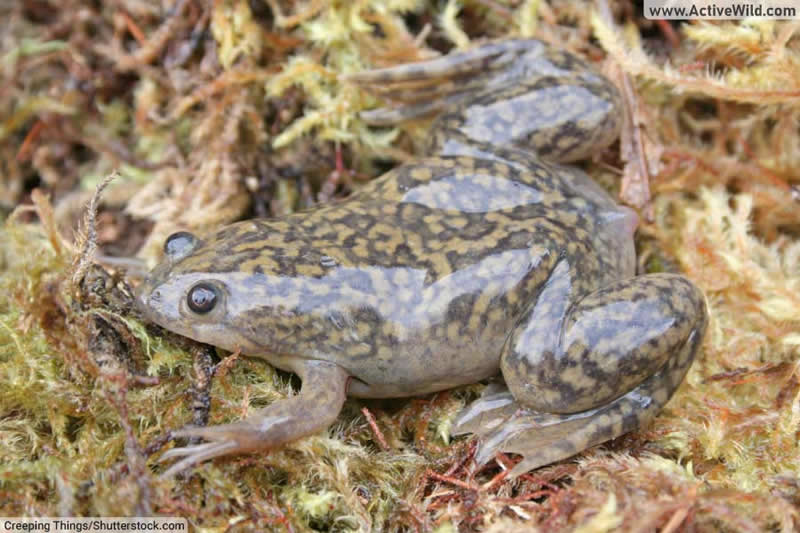
Scientific name: Xenopus laevis
Type of animal: Amphibian
Family: Pipidae
Where found: Africa
Conservation status: Least Concern
The African clawed frog is an amphibian found in streams, ponds and lakes across much of sub-Saharan Africa.
Lacking teeth or an extendable tongue, this primitive frog uses the claws on its feet to break apart its food.
The African clawed frog is a carnivore that feeds either by hunting or scavenging. It will eat almost anything that it can fit in its mouth.
Discover More with Active Wild
You can find out more about amphibians on this page: Amphibians – The Ultimate Guide
Discover more African amphibians on this page: African Amphibians Pictures & Facts
Discover more African animals on this page: African Animals List with Pictures & Facts
African Grey Parrot
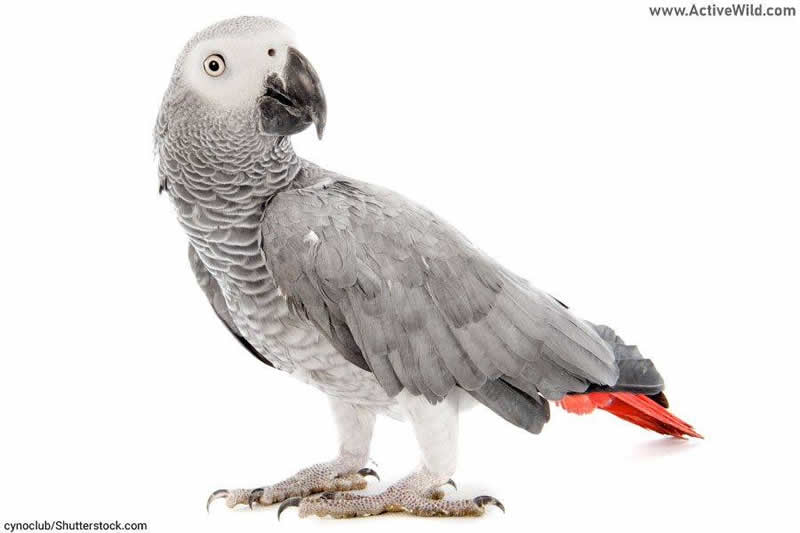
Scientific name: Psittacus erithacus
Type of animal: Bird
Family: Psittacidae
Where found: Africa
Conservation status: Endangered
The African grey parrot, also known as the grey parrot, is a species of parrot known for its high intelligence; African grey parrots raised in captivity have learned over 100 words.
Although a popular pet, the African grey parrot is now endangered in the wild. Illegal trapping for the pet trade and habitat loss are the species’ principal threats.
The African grey parrot lives in dense forests. It is primarily a frugivore (fruit-eater) that forages in groups of up to 30 individuals during the day. At night, it roosts in much larger groups.
Discover More with Active Wild
You can find out more about the African grey parrot on this page: African Grey Parrot Facts
You can find out more about birds on this page: Birds – The Ultimate Guide
African Wild Dog
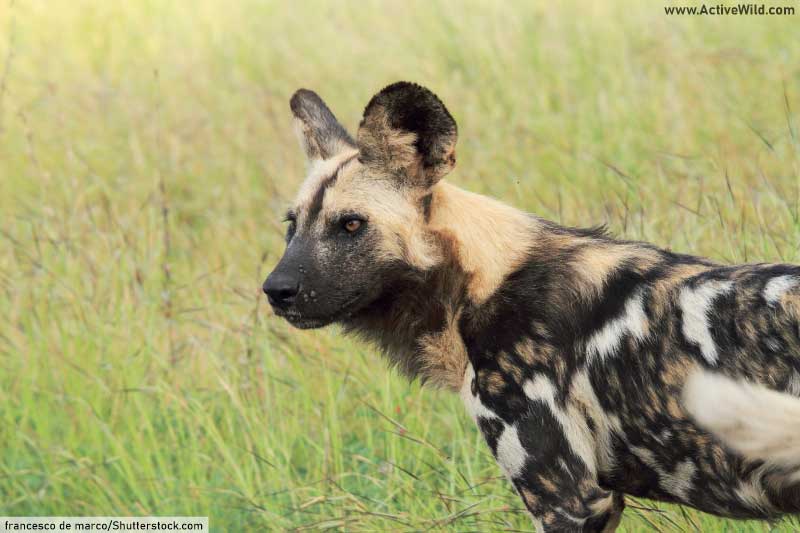
Scientific name: Lycaon pictus
Type of animal: Mammal
Family: Canidae
Where found: Africa
Conservation status: Endangered
Also known as the “painted dog” due to its colorful orange, brown and white coat, the African wild dog is the largest wild canid (member of the dog family, Canidae) found in Africa.
The species is highly social, living and hunting in packs typically containing four to nine adults. The main prey of the African wild dog is medium-sized antelope. The dogs pursue their prey until it is exhausted.
The African wild dog inhabits scrublands and savannas, where it competes with lions and hyenas for food. Both of these larger predators will dominate the African wild dog, either attacking it or stealing its prey.
Discover More with Active Wild
You can find out more about the African wild dog on this page: African Wild Dog Facts
You can see every dog species on this page: Dog Species List with Pictures & Facts
Discover more African animals on this page: African Animals List with Pictures & Facts
Airedale Terrier

Scientific name: Canis familiaris /Canis lupus familiaris
Type of animal: Mammal
Family: Canidae
Conservation status: Domestic
The Airedale terrier is a breed of domestic dog with its origins in Yorkshire, England. It is the largest terrier, and was originally bred to hunt badgers and other medium-sized quarry.
Discover More with Active Wild
Discover interesting facts on dogs on this page: Dog Facts
You can see every dog species on this page: Dog Species List with Pictures & Facts
Alaskan Malamute

Scientific name: Canis familiaris /Canis lupus familiaris
Type of animal: Mammal
Family: Canidae
Conservation status: Domestic
The Alaskan malamute is a large domestic dog breed with its origins in the far north, where it was bred as a sled dog. It is similar in appearance to, but larger than, Siberian Husky, which was bred for speed rather than power.
Discover More with Active Wild
Discover interesting facts on dogs on this page: Dog Facts
You can see every dog species on this page: Dog Species List with Pictures & Facts
Albatross
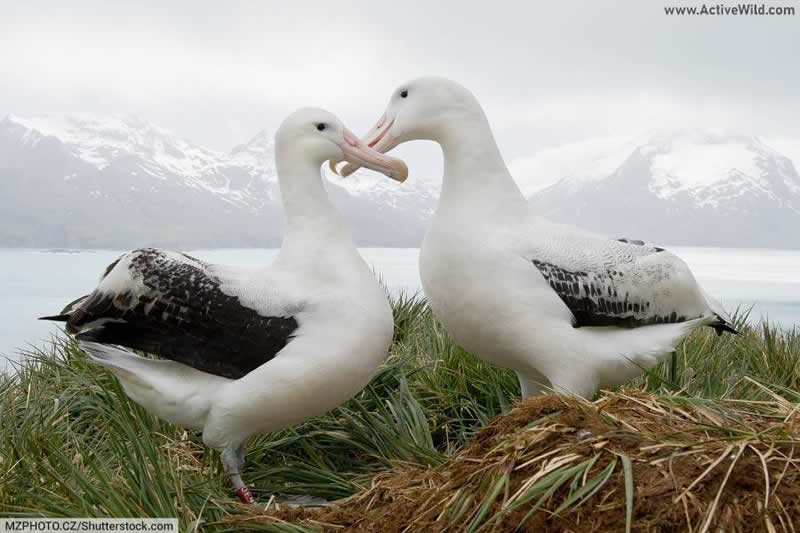
Type of animal: Bird
Family: Diomedeidae
Albatrosses are a family (Diomedeidae) of large seabirds.
Around 22 species of albatross are recognized (the exact number of albatross species is debated.) One of the best-known albatross species is the wandering albatross, which has a wingspan of up to 3.5 m / 11 ft 6 in – the largest of any living bird.
With their long, narrow wings, albatrosses are extremely efficient flyers. Individual albatrosses are known to travel over 120,000 km (almost 75,000 miles) in one year.
Albatrosses are extremely long-lived, with many wild individuals living over 50 years.
A Laysan albatross named Wisdom is the oldest-known wild bird. At the time of writing (2022) she is at least 70 years old. During her lifetime she has flown over 3,000,000 miles / 4,800,000 km.
Discover More with Active Wild
You can find out more about birds on this page: Birds: The Ultimate Guide
You can find out about the different types of bird on this page: Types Of Bird
Alligator Snapping Turtle
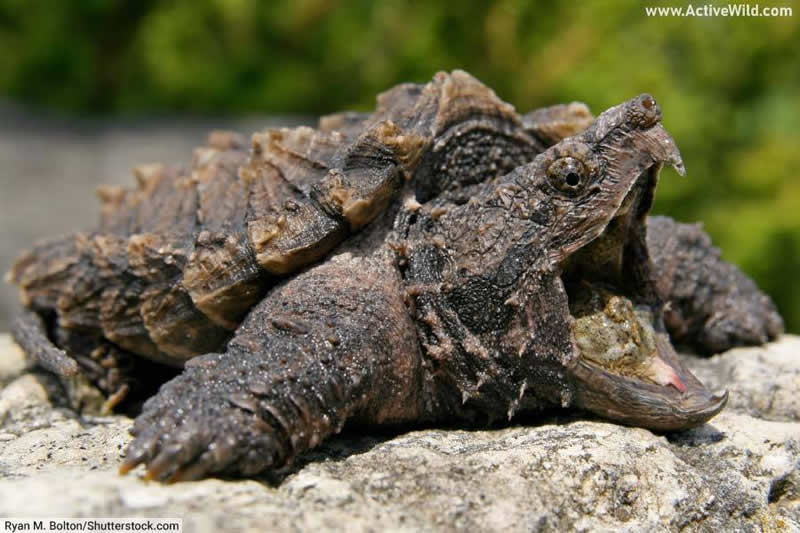
Scientific name: Macrochelys temminckii
Type of animal: Reptile
Family: Chelydridae
Where found: North America
Conservation status: Vulnerable
The alligator snapping turtle lives in rivers in the southeast of the United States. It is the largest freshwater turtle found the United States, with large individuals weighing around 176 lb. / 80 kg, and having a carapace (shell) length of 2.6 ft / 80 cm. Exceptionally large individuals reach weights of over 220 lb. / 100 kg.
The alligator snapping turtle gets its name from its powerful bite and the ridges on its shell, which resemble an alligator’s skin.
This American reptile is carnivorous. It uses a worn-shaped appendage on its tongue to lure fish within reach of its powerful jaws. The alligator snapping turtle is not a fussy eater, and preys on a wide variety of other animals, including young alligators and other turtles.
Discover More with Active Wild
You can find out more about the alligator snapping turtle on this page: Alligator Snapping Turtle Facts
You can find out more about reptiles on this page: Reptiles – The Ultimate Guide
Discover more amazing reptiles on this page: Reptiles List – Discover The Different Types Of Reptile
Alpaca

Scientific name: Lama pacos
Type of animal: Mammal
Family: Camelidae
Where found: Originated in South America
Conservation status: Domestic
The alpaca is one of seven living members of the camel family, Camelidae. (The family is also home to the Bactrian camel, wild Bactrian camel, dromedary, llama, vicuña and guanaco.)
Members of this family are known as camelids.
The alpaca looks like a small, hump-less camel and is smaller than the closely-related llama (the two species can successfully breed). It originates in South America, where it was domesticated thousands of years ago. It is bred for its fleece.
Discover More with Active Wild
You can find out more about mammals on this page: Mammals – The Ultimate Guide
Discover different types of mammal on this page: Types Of Mammals
American Alligator
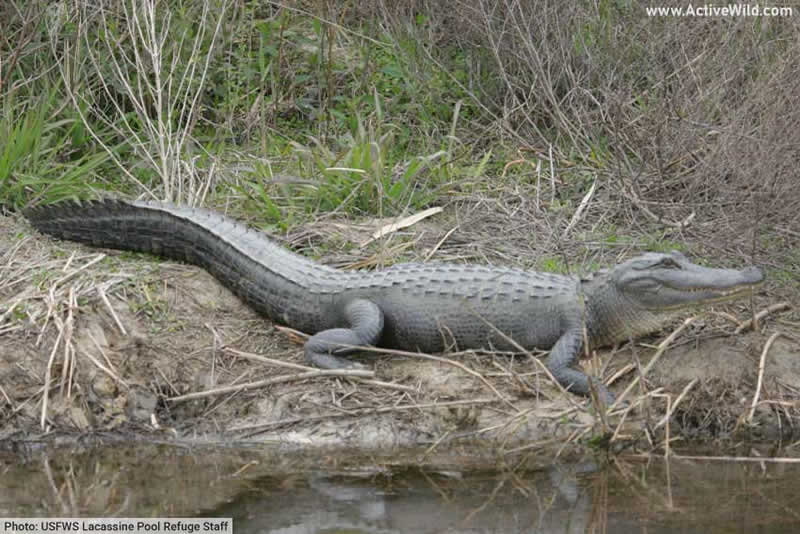
Scientific name: Alligator mississippiensis
Type of animal: Reptile
Family: Alligatoridae
Where found: North America
Conservation status: Least Concern
The American alligator is one of only two species of alligator, the other being the smaller, and critically endangered, Chinese alligator.
Both alligators belong to the family Alligatoridae, which is also home to the caimans of Central and South America. The family is part of a larger group, the order Crocodilia, which also contains the crocodiles.
Like all crocodilians, the American alligator is a predatory, semiaquatic reptile. The species lives in rivers, lakes and swamps in the southeastern United States. It can reach up to 16 ft. (5 m) in length, and is an apex predator, with no natural predators of its own.
Discover More with Active Wild
You can find out more about the American alligator on this page: American Alligator Facts
You can find out more about reptiles on this page: Reptiles – The Ultimate Guide
Discover more amazing reptiles on this page: Reptiles List – Discover The Different Types Of Reptile
Amur Leopard
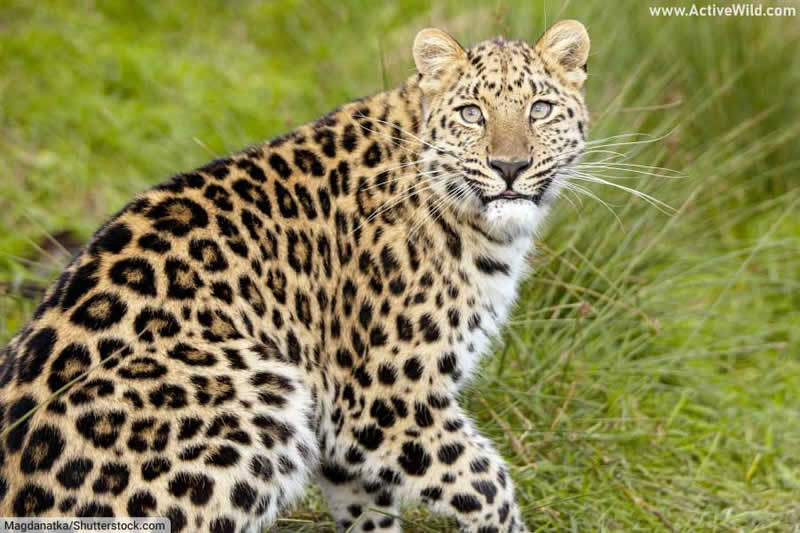
Scientific name: Panthera pardus orientalis
Type of animal: Mammal
Family: Felidae
Where found: Asia
Conservation status: Critically Endangered
The Amur leopard is one of eight currently recognized subspecies (types) of leopard. It is found in forests in southeastern Russia and northern China. Its coat is thicker than that of other leopard subspecies – an adaption for living in cold, often snow-covered habitats.
Although the leopard has the conservation status of “Vulnerable”, the Amur leopard subspecies is rated “Critically Endangered”. A 2015 study found that there were fewer than 60 Amur leopards living in the wild.
The main threat to the Amur leopard is habitat loss. Conversion of the cat’s forest habitat to farmland has caused a reduction in available prey. The Amur leopard’s population has become severely fragmented.
Discover More with Active Wild
You can find out more about the Amur leopard on this page: Amur Leopard Facts
Discover more about leopards on this page: Leopard Facts
See every type of cat species on this page: Cat Species List with Pictures & Facts
Anaconda
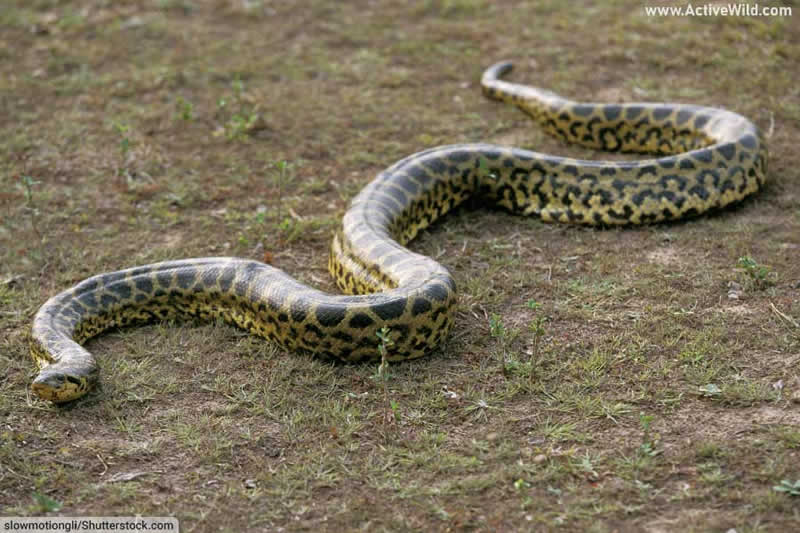
Type of animal: Reptile
Family: Boidae
Genus: Eunectes
Where found: South America
Conservation status: Least Concern
There are four species of anaconda: the green, yellow, darkly-spotted and Bolivian anaconda. Together, they make up the genus Eunectes, which is part of the boa family, Boidae.
The name “anaconda” is often used to refer to just the green anaconda. This species, which is found in the Amazon rainforest, is the world’s largest snake by weight, and the second-longest, after the reticulated python.
Anacondas (and all other boas) are non-venomous snakes that use constriction to overcome their prey. Capable swimmers, they typically inhabit aquatic environments and feed on a wide range of prey, including caimans, turtles, tapirs, deer and capybaras.
Discover More with Active Wild
You can find out more about the green anaconda on this page: Green Anaconda Facts
Discover more amazing snakes on this page: Types Of Snakes – Pictures & Facts
You can find out more about snakes on this page: Snake Facts
You can see more rainforest animals on this page: Rainforest Animals List
Anchovy
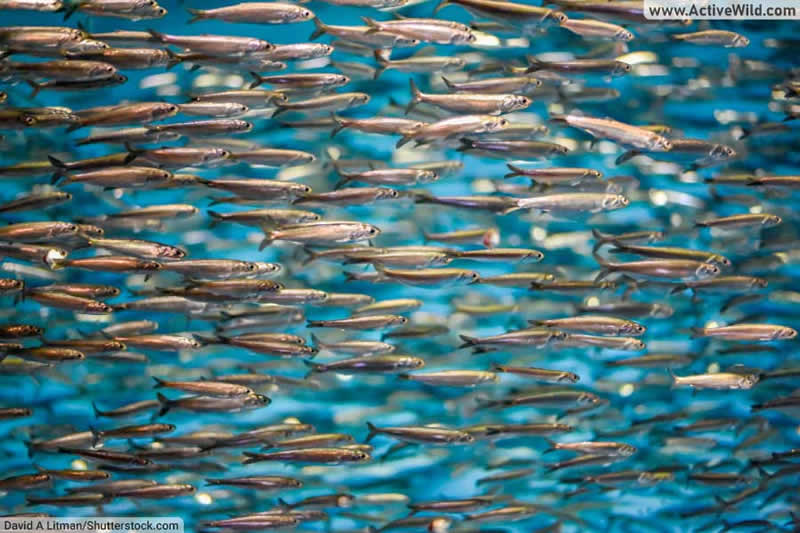
Type of animal: Fish
Family: Engraulidae
Where found: Atlantic, Indian and Pacific Ocean
The 150 species of anchovy make up the family Engraulidae. Anchovies are small fish, with silvery green / blue bodies. Although a small number of anchovy species are found in freshwater, most are marine fish that inhabit temperate regions of the Atlantic, Indian and Pacific Oceans.
Anchovies are filter feeders, swimming with their mouths open and filtering food, which consists of plankton and fish larvae, from the water.
Known for their strong, salty flavor, anchovies are used in many foods and are commercially hunted. The fish also form an important part of the ocean food chain wherever they are present.
Discover More with Active Wild
You can see more amazing ocean animals on this page: Ocean Animals List with Pictures & Facts
You can find out more about the marine biome on this page: Marine Biome Facts
Angel Shark
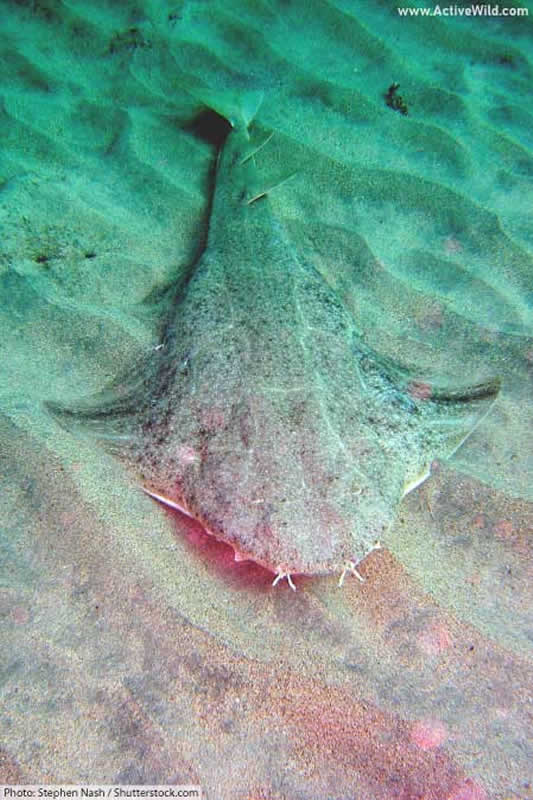
Type of animal: Fish
Family: Squatinidae
Genus: Squatina
Where found: Temperate & tropical waters worldwide
There are 24 recognized angel shark species. Angel sharks make up the genus Squatina, and the family Squatinidae. They are most common in shallow waters, and are present in temperate & tropical waters worldwide.
With their flat bodies and wide pectoral (side) fins, angel sharks can resemble rays. They live on the sea bed, burying themselves in sediment and waiting for prey to approach. They are capable of making extremely quick attacks, and may lunge at unsuspecting divers.
Discover More with Active Wild
Discover more amazing sharks on this page: Sharks List with Pictures & Facts
You can see more amazing ocean animals on this page: Ocean Animals List with Pictures & Facts
You can find out more about the marine biome on this page: Marine Biome Facts
Anglerfish
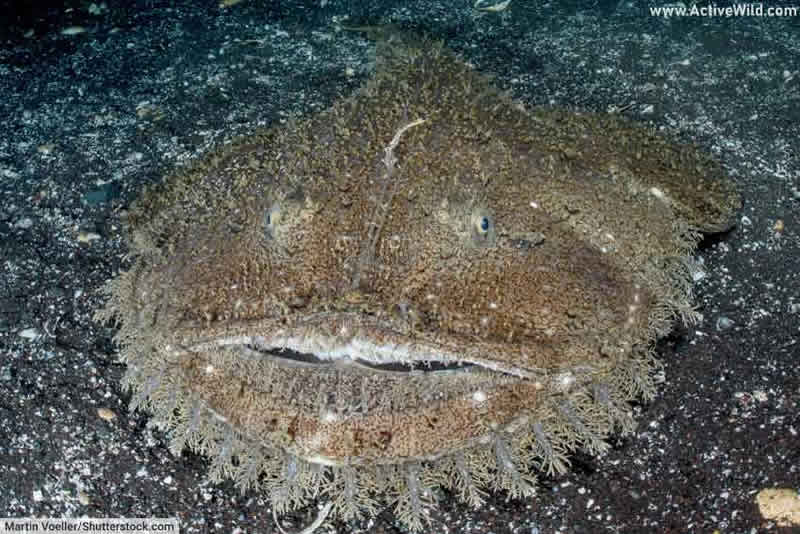
Type of animal: Fish
Order: Lophiiformes
Where found: Oceans worldwide
The 350-plus species of anglerfish together make up the order Lophiiformes. These predatory fish are found in oceans worldwide, and, depending on species, live in both deep-sea and shallow-water habitats.
Although anglerfish have a variety of different body shapes, all hunt in the same manner. A specially-adapted fin, at the tip of which is a fleshy ball known as an “esca”, is moved enticingly to lure fish within snapping distance of the anglerfish’s fearsome jaws.
The esca of many anglerfish species is luminescent.
Discover More with Active Wild
Discover more ugly animals on this page: Ugly Animals Pictures & Facts
You can see more amazing ocean animals on this page: Ocean Animals List with Pictures & Facts
You can find out more about the marine biome on this page: Marine Biome Facts
Anteater
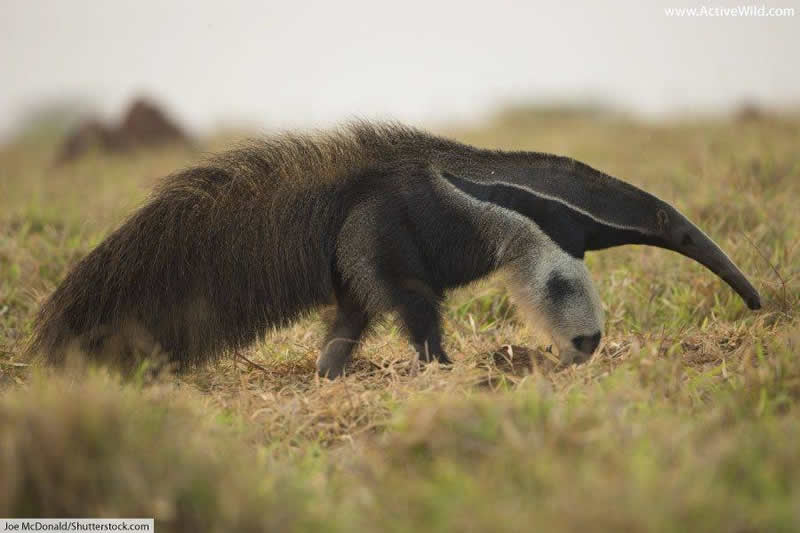
Type of animal: Mammal
Order: Pilosa
Suborder: Vermilingua
Where found: Central and South America
There are four species of anteater: the giant anteater, silky anteater, and the northern and southern tamanduas. All are found in Central and South America. The scientific name and conservation status of each anteater species is listed below:
- Giant anteater, Myrmecophaga tridactyla, Vulnerable
- Silky anteater, Cyclopes didactylus, Least Concern
- Northern tamandua, Tamandua mexicana, Least Concern
- Southern tamandua, Tamandua tetradactyla, Least Concern
As the name suggests, an anteater’s diet consists almost entirely of small insects, in particular ants and termites. An anteater has a specially-modified, long, thin and sticky tongue with which it captures its insect prey.
The largest anteater species, the giant anteater, is terrestrial (ground-dwelling), while the other three are arboreal (tree-dwelling). The arboreal anteaters have a prehensile (capable of grasping) tail for holding onto branches while climbing.
Anteaters belong to the superorder Xenarthra, which also contains sloths and armadillos.
Discover More with Active Wild
You can find out more about anteaters on this page: Anteater Facts
You can find out more about the giant anteater on this page: Giant Anteater Facts
Antelope
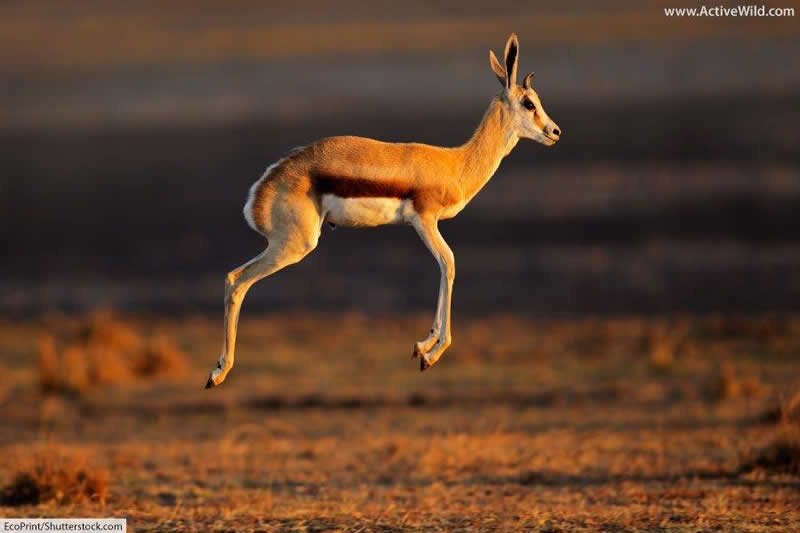
Type of animal: Mammal
Family: Bovidae
Where found: Africa, Asia
Antelopes are fast, nimble, hoofed mammals with long, thin legs and slender bodies.
In most species, both males and females have horns, although those of the male are usually longer. Unlike the antlers of a deer, which are shed annually, an antelope’s horns grow continuously.
Nearly all of the 91 antelope species are found in Africa, with the others being found in Asia. Well-known types of antelope include the springbok, gazelles, duikers, elands, oryxes and kudus.
Antelopes are herbivores and usually live in herds. Most antelopes are found in savannas, although some species are found in woodland, forest, and even desert habitats.
Discover More with Active Wild
Discover more African animals on this page: African Animals List with Pictures & Facts
Discover more Asian animals on this page: Asian Animals List with Pictures & Facts
Archerfish
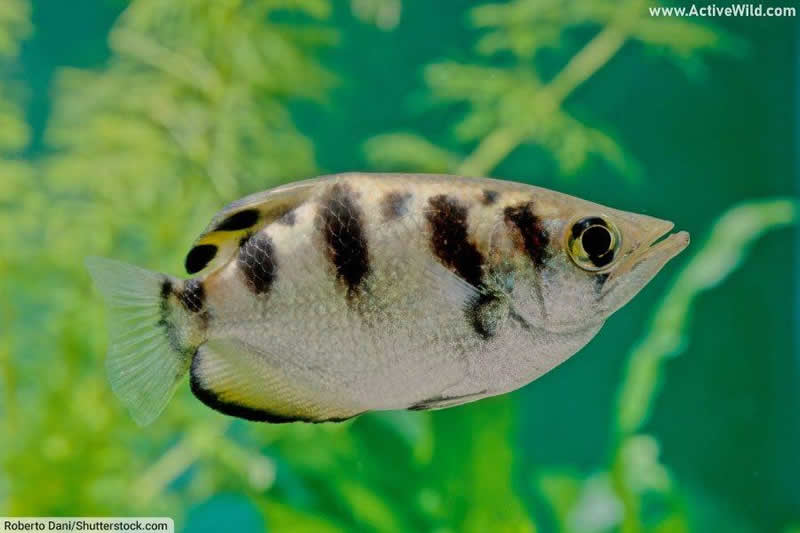
Type of animal: Fish
Family: Toxotidae
Genus: Toxotes
Where found: Asia, Australia
The seven species of archerfish make up the genus Toxotes and the family Toxotidae. Most inhabit freshwater habitats, although some may also be found in brackish water. Archerfish are found in Asia and Australia.
Archerfish are named for their unique hunting method, which involves spitting a stream of water at land-based prey, knocking it into the water where it can be eaten.
Using its acute eyesight to take aim, an archerfish uses its specially-adapted mouthparts to shoot a stream of water up to 5 m (16 ft.).
Archerfish target insects on plants growing above the water, raising their lips just above the surface before firing. The stream of water knocks the insect into the water, where it is eaten by the fish.
Occasionally, an archerfish will leap directly out of the water to capture its prey.
Discover More with Active Wild
Discover more Asian animals on this page: Asian Animals List with Pictures & Facts
Discover more Australian animals on this page: Australian Animals List with Pictures & Facts
Arctic Fox
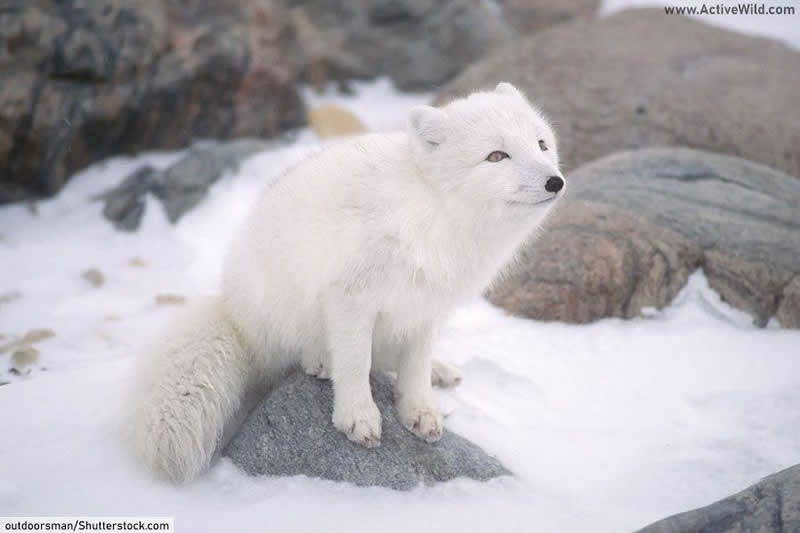
Scientific name: Vulpes lagopus
Type of animal: Mammal
Family: Canidae
Where found: The Arctic
Conservation status: Least Concern
The Arctic fox is one of twelve species in the “true fox” genus, Vulpes, which is part of the wider dog family, Canidae.
Found on the Arctic tundra of North America and Eurasia, the Arctic fox has numerous adaptations for living in this cold, inhospitable habitat. These include a multi-layered coat, thick tail and fur-covered paws.
The Arctic fox’s coat changes color depending on the season; during winter it is white for camouflage against the snow, while during the summer months it becomes brown. The coat is also 140% thicker during the winter, providing added insulation during this time.
Discover More with Active Wild
You can find out more about the Arctic fox on this page: Arctic Fox Facts
Discover more amazing Arctic animals on this page: Arctic Animals List
See every dog species on this page: Dog Species List with Pictures & Facts
Arctic Hare
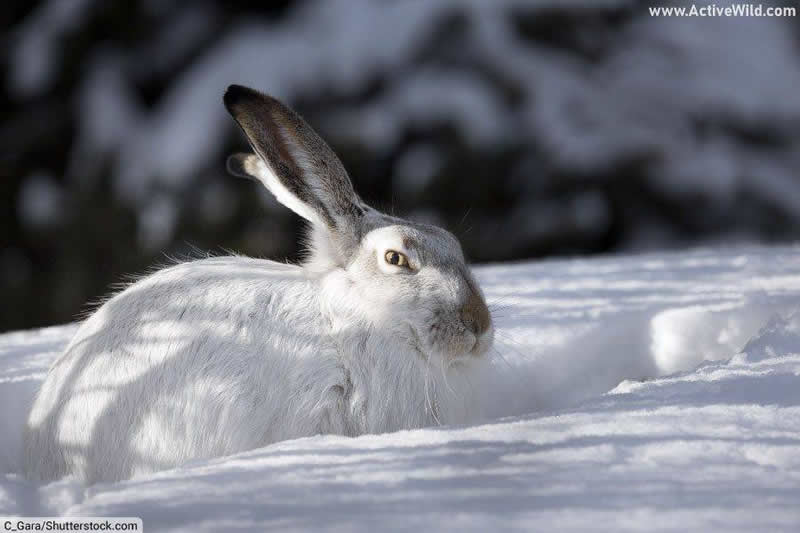
Scientific name: Lepus arcticus
Type of animal: Mammal
Family: Leporidae
Where found: The Arctic
Conservation status: Least Concern
The Arctic hare is the largest species of hare, with a nose-tail length of up to 80 cm / 2.62 ft, and a weight of up to 7 kg / 15.4 lb. It can run at speeds of up to 40 mph / 64 km/h.
The species’ thick white coat, which provides both insulation and camouflage during the winter months, becomes brown in the summer for camouflage against the bare tundra. (Arctic hares living in the northernmost regions of the species’ range are white all year round.)
During the winter, Arctic hares can amass in groups containing several hundred individuals.
Discover More with Active Wild
You can find out more about the Arctic hare on this page: Arctic Hare Facts
Discover more amazing Arctic animals on this page: Arctic Animals List
Armadillo
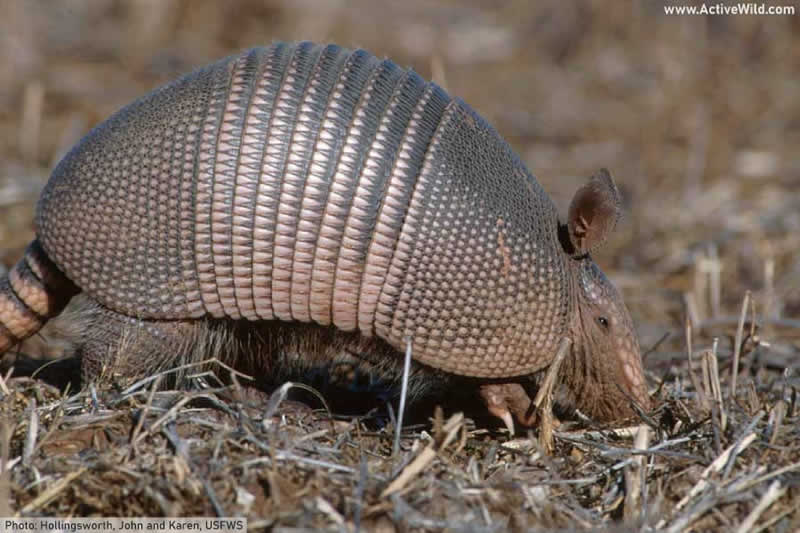
Type of animal: Mammal
Order: Cingulata
Where found: South America, North America
Armadillos are ground-dwelling mammals with flexible, armored shells. The 21 species of armadillo make up the order Cingulata. Most armadillos are found in South America, but some are also found Central and North America.
The nine-banded armadillo is the only armadillo regularly found in the United States. The species is the state small mammal of Texas.
Armadillos belong to the superorder Xenarthra, which also contains sloths and anteaters.
Discover More with Active Wild
You can find out more about the nine-banded armadillo on this page: Nine-Banded Armadillo Facts
Discover more about the superorder Xenarthra on this page: Xenarthra Facts
Asian Elephant
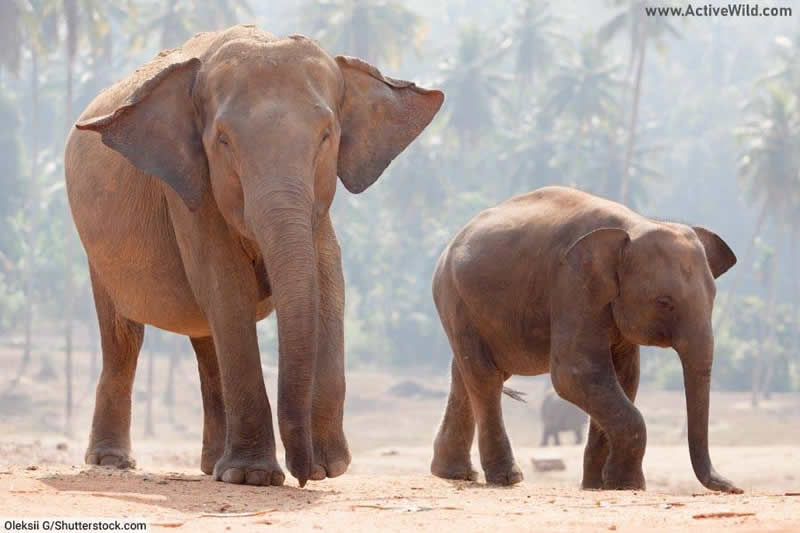
Scientific name: Elephas maximus
Type of animal: Mammal
Family: Elephantidae
Where found: Asia
Conservation status: Endangered
The Asian elephant is one of three living elephant species, and the only one found outside of Africa.
Weighing up to 2.7 metric tonnes / 6,000 lb., the Asian elephant is the largest land animal in Asia, and the second-largest of the three elephant species (the African bush elephant is the largest).
The Asian elephant has smaller ears and smoother skin than the African bush elephant. Another distinguishing feature of the Asian elephant is that only males have tusks (both male and female African elephants have tusks).
There are three subspecies of Asian elephant: the Indian elephant, Sri Lankan elephant and Sumatran elephant.
The Asian elephant is endangered due to habitat loss and poaching.
Discover More with Active Wild
You can find out more about the Indian elephant on this page: Indian Elephant Facts
Find out more about endangered elephants on this page: Endangered Elephants
Discover more Asian animals on this page: Asian Animals List with Pictures & Facts
Auk
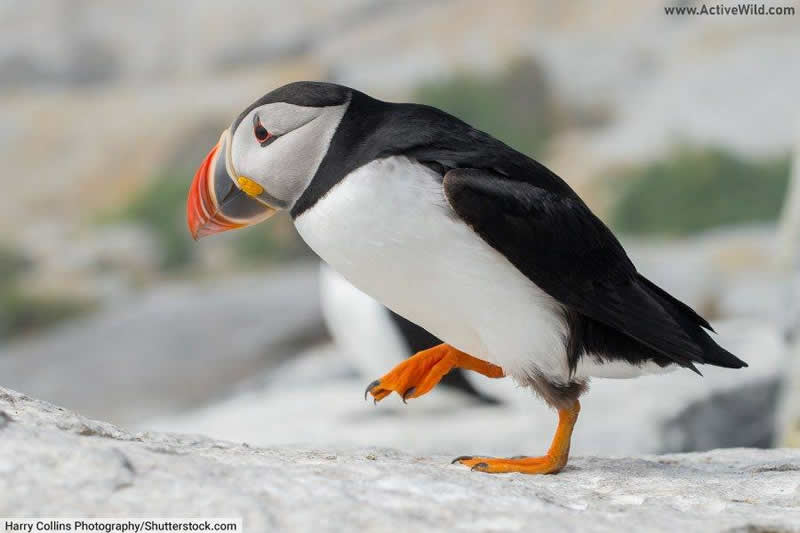
Type of animal: Bird
Family: Alcidae
Where found: Northern Hemisphere
The 24 auk species make up the family Alcidae. Auks are mid-sized, predominantly black and white seabirds that stand upright and have small wings.
Auk species include puffins, murres, guillemots, the razorbill, auklets and murrelets.
Despite numerous similarities between auks and penguins, the two groups are not related.
Like penguins, auks use their small, powerful wings to “fly” through the water. However, unlike penguins, all auks can fly.
Auks use their impressive swimming skills to catch their prey, which is predominantly fish or krill depending on the species.
Discover More with Active Wild
You can find out more about birds on this page: Birds: The Ultimate Guide
You can find out about the different types of bird on this page: Types Of Bird
Australian Shepherd

Scientific name: Canis familiaris /Canis lupus familiaris
Type of animal: Mammal
Family: Canidae
Conservation status: Domestic
The Australian shepherd is a breed of domestic dog that originated in the United States. Its ancestors were working dogs imported to the country from Australia. It is a mid-sized breed, first popular among cowboys due to its intelligence and strong herding instinct, but now regularly kept as a pet.
Discover More with Active Wild
Discover interesting facts on dogs on this page: Dog Facts
You can see every dog species on this page: Dog Species List with Pictures & Facts
Avocet

Type of animal: Bird
Family: Recurvirostridae
Genus: Recurvirostra
Where found: North America, South America, Europe, Asia, Australia
Conservation status: Least Concern
Avocets are long-legged, long billed, predominantly black and white wading birds. They feed mainly on aquatic insects, which they capture by moving their thin, upturned bills in a side-to-side motion through the water.
There are four species of avocet, which together make up the genus Recurvirostra. Avocets belong to the family Recurvirostridae, along with the five species of stilt.
The four avocet species are listed below:
- American avocet Recurvirostra americana North America
- Andean avocet Recurvirostra andina South America
- Pied Avocet Recurvirostra avosetta Europe, Asia
- Red-necked avocet Recurvirostra novaehollandiae Australia
Discover More with Active Wild
You can find out more about birds on this page: Birds: The Ultimate Guide
You can find out about the different types of bird on this page: Types Of Bird
Axolotl
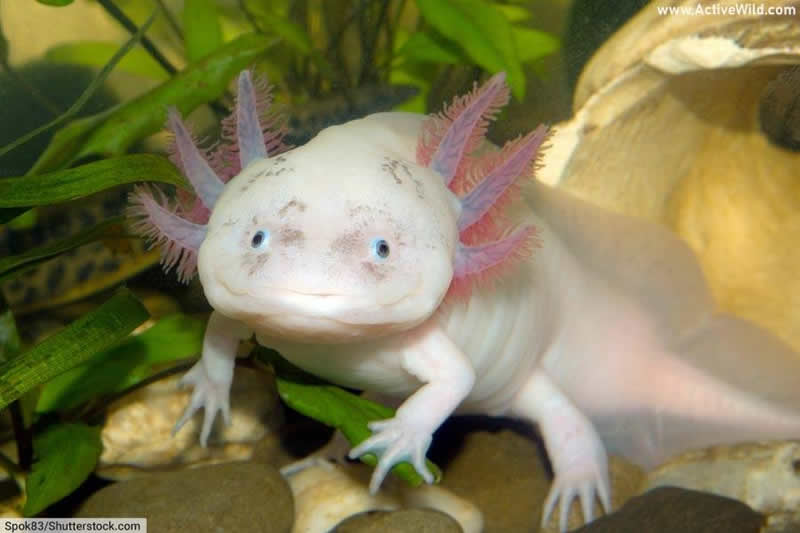
Scientific name: Ambystoma mexicanum
Type of animal: Amphibian
Family: Ambystomatidae
Where found: North America
Conservation status: Critically Endangered
The axolotl is a critically endangered amphibian found in the vicinity of Mexico City.
Today, several of the lakes in which the species was originally found have been drained, and the species is now present only in a limited number of canals. This dramatic loss of habitat has led to the species becoming critically endangered in the wild.
Despite being threatened with extinction in the wild, the axolotl is a popular pet and is also of interest to scientists due to its ability to regenerate not only lost limbs, but also parts of the eye, heart and brain.
A member of the salamander order, Urodela, the axolotl differs from many amphibians in that it does not undergo metamorphosis. Even as an adult, the axolotl remains fully-aquatic, breathing with gills rather than with lungs.
Discover More with Active Wild
You can find out more about the axolotl on this page: Axolotl Facts
Discover more critically endangered species on this page: Critically Endangered Species List with Pictures & Facts
Aye-Aye

Scientific name: Daubentonia madagascariensis
Type of animal: Mammal
Family: Daubentoniidae
Where found: Africa (Madagascar)
Conservation status: Critically Endangered
The aye-aye is one of around 100 species of lemur. This group of primates is found only on the African island country, Madagascar.
The world’s largest nocturnal primate, the aye-aye lives in the rainforests on the east coast of Madagascar. It hunts for insect grubs using echolocation; by tapping on trees with its bony third finger, the aye-aye is able to sense from the sound if food is present under the bark.
Discover More with Active Wild
You can find out more about the aye-aye on this page: Aye-Aye Facts
Discover more amazing rainforest animals on this page: Rainforest Animals List
The aye-aye is a primate. You can find out more about primates on this page: Primate Facts
Animals That Start With A: Conclusion
We hope that you’ve discovered some interesting animals with names beginning with A on this page.
You can discover more animals in our A to Z animals section by clicking on the letters below…
The post Animals That Start With A: List With Pictures & Interesting Facts appeared first on Active Wild.


























